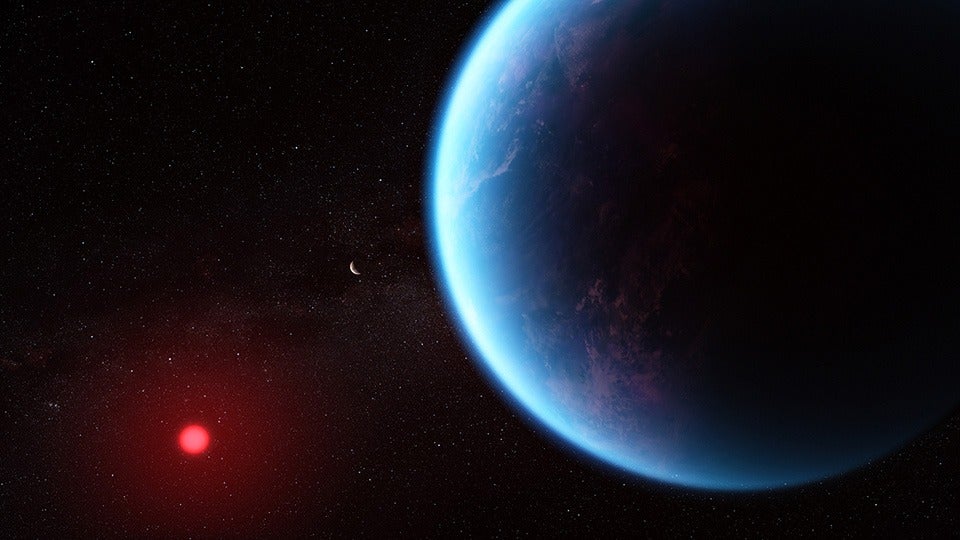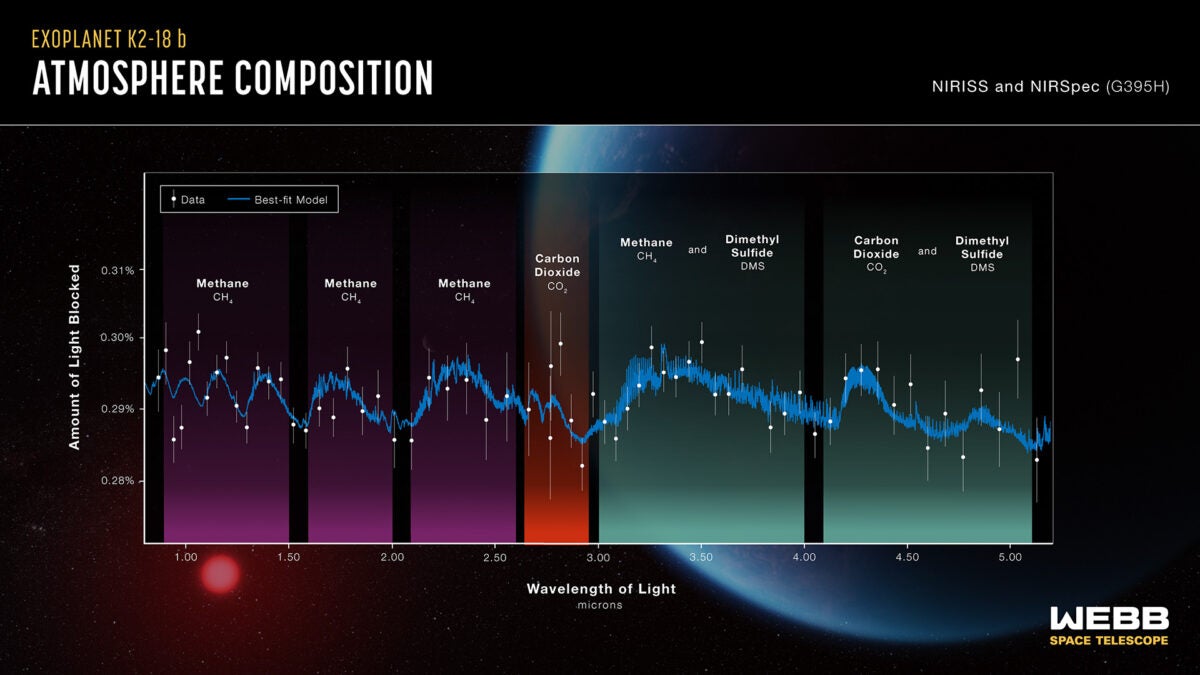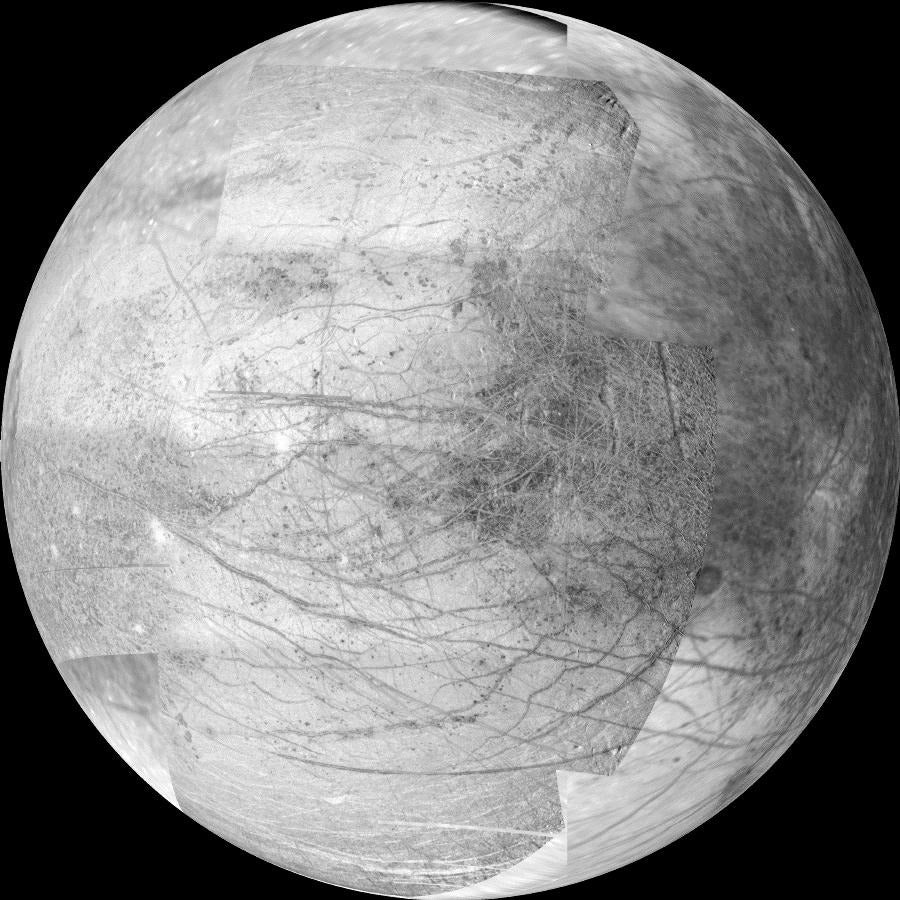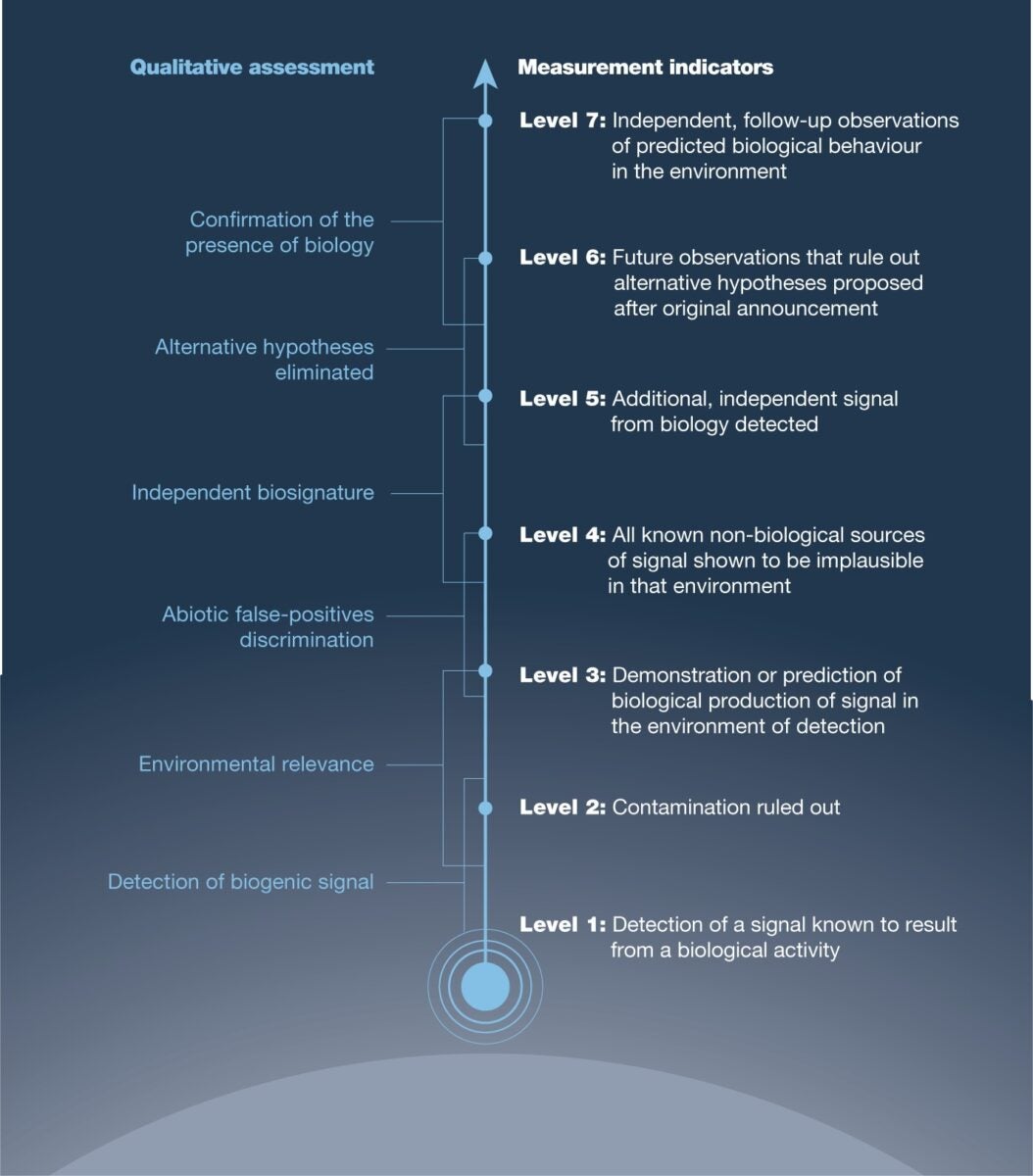
This artist’s concept reveals what exoplanet K2-18 b would possibly seem like based totally on science data. Credit score rating: NASA, CSA, ESA, J. Olmsted (STScI), Science: N. Madhusudhan (Cambridge Faculty).
Welcome to the Astronomy.com roundtable the place our editors help make clear (and usually debate) scorching topics. This week, Astronomy’s Dave Eicher, Alison Klesman, Daniela Mata, and Mark Zastrow weigh in on the potential for all times on the exoplanet K2-18 b.
Astronomy.com: The exoplanet known as K2-18 b was discovered with the Kepler Space Telescope in 2015. It orbits an M dwarf star inside the constellation Leo. It’s 124 light-years away from Earth.
Various data firms currently reported on the data from researchers using the James Webb Space Telescope to take a extra in-depth check out this intriguing exoplanet. Early this 12 months quite a lot of researchers made statements on newest Webb findings that counsel a planet perhaps nice to life, and even containing life, have sparked newest discussions.
Proper right here is how NASA describes it: “Webb’s discovery supplies to newest analysis suggesting that K2-18 b may presumably be a Hycean exoplanet, one which has the potential to personal a hydrogen-rich ambiance and a water ocean-covered ground.”
Did we uncover “life” on K2-18 b?
Dave Eicher: No. We haven’t found indicators of life on K2-18 b. Just because the fairly a number of claims of astronomers discovering “exoplanets an identical to Earth” have wishfully jumped the gun, some astronomers are a little bit of ahead of the game as soon as extra. The planet’s spectrum is tantalizing to some and much ado about nothing to others. It is rich in hydrogen, not like our primarily nitrogen ambiance. Some planetary scientists think about it’s seemingly that K2-18 b has liquid oceans, which may improve the potential for all times. Closing 12 months researchers found proof of carbon dioxide and methane inside the spectrum, and this as soon as extra would possibly stage in direction of a dwelling ecosystem on the world. Further, remaining 12 months observations revealed dimethyl sulfide, a compound that on Earth is produced largely by phytoplankton. Nonetheless the data are inconclusive. This will often suggest one factor, and it may not. And that’s seemingly the place we’ll be for a really very long time. Totally different exoplanets may reveal giant excesses in carbon dioxide, methane, or completely different compounds, and these may scream out additional loudly from afar that life is present. Nonetheless hey of us, we ain’t there however.
Astronomy.com: Alison?
Alison Klesman: Sorry, nonetheless nope! I’m largely echoing what what Dave has said, nonetheless up to now what astronomers have discovered about this world is that K2-18 b is presumably a Hycean planet, which is a elaborate time interval for saying it’d host a ground ocean of water and hydrogen ambiance. Furthermore, astronomers are saying this could be the case not based totally on the detection of an exact water ocean or a hydrogen ambiance, nonetheless based totally on the detection or non-detection of completely different elements and molecules (i.e., ample carbon dioxide and methane, and a shortage of ammonia) inside the planet’s ambiance, from which they infer such an ocean or ambiance would possibly exist.
(Have I emphasised ample phrases inside the earlier paragraph to level that every one in every of that’s indirect proof for positive circumstances on the planet? I hope so!)

Furthermore, even once we had been fully optimistic that K2-18 b had a hydrogen ambiance and a ground ocean of water, neither of them — individually or collectively — is tantamount to the invention of life. All of the invention of those two points would say is that the planet is doubtlessly habitable for some type of life as we understand it, really not that it is inhabited by any life, Earth-like or in another case.
RELATED: What would signal life on alien planets? | What happens if SETI detects alien life
I moreover have to highlight the reality that the detection of dimethyl sulfide (that tantalizing biomarker of life) should not be even a company discovering the least bit! Straight from this paper’s abstract, “the spectrum moreover suggests potential indicators of dimethyl sulfide.” Pay attention to that wording: suggests potential indicators. I merely have to reiterate that this means dimethyl sulfide has not however been unequivocally detected.
All this possibly makes me sound pretty pessimistic, and I want so as to add that I fully think about there could also be one other kind of life (Earth-like or in another case!) available on the market inside the universe, and perhaps even on this particular planet! Nonetheless to answer this specific question, no, we fully have not found life on K2-18 b based totally on the data we have got up to now.
Astronomy.com: That’s two nopes! This pessimism is good. Take note the meteorite that purportedly had proof of pure life on Mars? It would take one factor unprecedented to offer an actual “a ha!” second. Daniela and Mark, you’re up.
Daniela Mata: As so much as we may have to think about that our extraordinary habitable planet should not be alone, sadly, as of now, that is nonetheless very so much true. Merely as Dave and Alison have outlined, usually planetary scientists get excited and tend to brighten what was detected, or not detected, in exoplanets’ biosignatures. And when that happens, it’s comes all the way in which right down to semantics and it is vital to seek for these magic phrases (i.e. “suggests” or “potential”), to discern if these findings are concrete or mere proposals.
This is not to say that we must always at all times dismiss the devoted time and effort these scientists have put into their work. The reality that JWST revealed the presence of methane and carbon dioxide in K2-18 b, together with to the help that K2-18 b may presumably be a Hycean exoplanet, is a monumental uncover! K2-18 b is the smallest planet that has detectable atmospheric choices and lies inside the host star’s habitable zone (moreover known as the Goldilocks zone). And as Alison explains, a Hycean exoplanet has a liquid water ocean and hydrogen-rich ambiance, which is totally attainable inside the Goldilocks zone.
Nonetheless, given the reality that K2-18 b is about 2 ½ situations the Earth’s radius and has a hydrogen-rich ambiance which will lengthen so much extra than that of Earth’s, this creates a major obstacle inside the exoplanet’s path to habitability. And with an extended ambiance like that, it makes the planet additional like Neptune fairly than Earth.
If an astronaut had been to go to K2-18 b, they’d experience a drastic improve in temperature and stress as they moved in direction of the center of the planet. Let’s say the astronaut was someway indestructible and managed to journey to the exoplanet’s core, the temperature would possibly attain about 5,000 ranges Fahrenheit (2,700 ranges Celsius) and have stress a whole lot of situations stronger than Earth’s ground.
That being said, even on the deep-surface of K2-18 b, sophisticated molecules needed for all occasions to thrive, merely cannot thrive; the circumstances mustn’t safe ample. Due to this fact, no indicators of life from this exoplanet.
Within the interim, for many who see a headline stating, “Indicators of life detected,” or one factor comparable, take a pause and protect a be careful for Astronomy’s safety of the study. And most importantly, may it remind you the way in which treasured and delicate our Earth really is, and the way in which it deserves greater than the way in which by which folks have been treating it.
Mark Zastrow: Equivalent one-word reply: No.
Nonetheless I’ll add a small little little bit of media commentary.
Take into consideration the notional headline: “NASA’s Curiosity rover finds indicators of life on Mars.” Correctly, Curiosity has definitely found methane on Mars. And methane is a sign of life. So, it may presumably be argued, in a pedantic and transitive sense, that the headline should not be false.
The difficulty is that methane will also be a sign of not-living, geological points, which might be as mundane as methane seeping up by cracks inside the ground.
So even when astronomers go on to gather additional data and proof for dimethyl sulfide on K2-18 b, having a company detection of it doesn’t suggest that we have found life.
In reality, it’s almost misleading to say that astronomers will ever “uncover” life, on the very least inside the frequently sense of the phrase “uncover”. It’s a bit completely completely different for robotic and human explorers; if an astronaut lands on Europa and is attacked by a subsurface kraken, then the headline “Alien life found” might be appropriate. Nonetheless for astronomers who will not ever go to the world they’re studying, “discovering” life doesn’t suggest merely buying proof that life on a world exists — it moreover means having to indicate that every one recognized nonliving sources of said proof cannot exist on that world. In several phrases, it’s not ample to do the laborious work of discovering life — you moreover should do an unimaginable job of not discovering not-life.
This is just one methodology whereby we as science writers battle with the English language to convey uncertainty. We usually end up leaning on phrases like “potential” or “proof of” or “indicators of”. Nonetheless as markers of uncertainty, these phrases are type of stop-gap choices, borrowed for the intention — they nonetheless stage, if tentatively, in a single route. They don’t really convey uncertain states of information. And correct now, any conclusions about life to be drawn from exoplanet observations are very uncertain, definitely.

When JWST was nonetheless beneath enchancment 15 or 20 years previously, there was speculation that it may have the flexibility to detect biosignatures. It was normally talked about, by scientists and media alike, as the next giant hope for finding life inside the universe. Nonetheless spherical 10 years previously, as astronomers did additional detailed modeling of planetary atmospheres and JWST’s capabilities, the consensus emerged — and stays — that JWST would possibly tease out tantalizing hints of biosignatures, nonetheless seemingly wouldn’t be extremely efficient ample to make a company detection.
That’s exactly what we’re seeing play out with planets like K2-18 b. And it’s why NASA is already planning a model new flagship home telescope known as the Habitable Worlds Observatory, which is able to most likely be expressly constructed (with know-how that has however to be completely developed) to detect life on earthlike worlds in shut by star strategies. That’s a protracted strategies off, though; HWO is in the meanwhile set to launch inside the 2040s.
So until then, we’re on this weird messy place the place astronomers using JWST will seemingly, inside the near future, uncover dozens and even tons of of planets that would presumably be said to have “proof of indicators of life.” However, on the an identical time, we’ll seemingly be unable to seek out out whether or not or not a positive spectral line is definitely the molecule that we hope it is, and as well as whether or not or not it’s from life or not-life.
As a result of drawback in talking this uncertainty — and the sensationalism which will consequence — in 2021, a bunch of NASA scientists proposed a “Confidence of Life Detection” scale (CoLD for temporary). The CoLD scale has seven ranges, equal to rising ranges of confidence for the existence of alien life. The 1st step is simply detecting an indication that could be produced by life. Stage 2 consists of ruling out contamination inside the signal, and diploma 3 is to work out a plausible mechanism for all occasions to offer the signal. Stage 4 is displaying that every one non-living sources of the signal are implausible in that setting, and the remaining ranges include additional follow-up verification work.

This has not however been broadly adopted, and the group themselves say it’s additional of a proof-of-concept, meant to impress dialogue. Nonetheless I uncover the concept useful as a result of it provides us a framework to test claims and put them into context. So as soon as we report that “Researchers say they’ve discovered phosphine on Venus, a potential sign of life,” we’re in a position to moreover say: “The group is efficiently claiming a CoLD-level-3 detection, as they’re saying they’ve dominated out contamination (diploma 2) and proposed a hypothesis of how life would possibly exist in venusian clouds (diploma 3). Nonetheless many researchers dispute their level-2 declare, and argue completely different sources can make clear the signal, along with sulfur dioxide.”
For comparability, the aforementioned martian meteorite ALH84001 may presumably be said to fall throughout the an identical place inside the scale — a level-3 declare, nonetheless with diploma 2 disputed. K2-18 b and its attainable dimethyl sulfide signal are sitting tentatively on diploma 1, with extra JWST observations pending.
